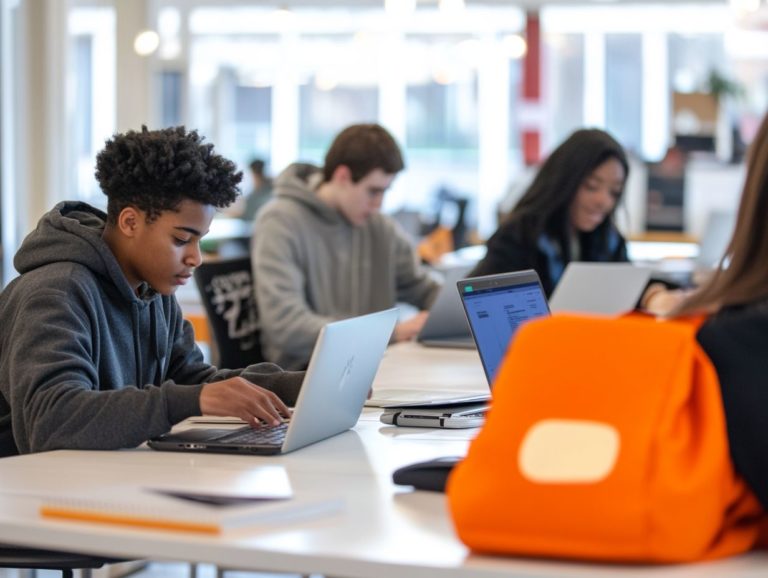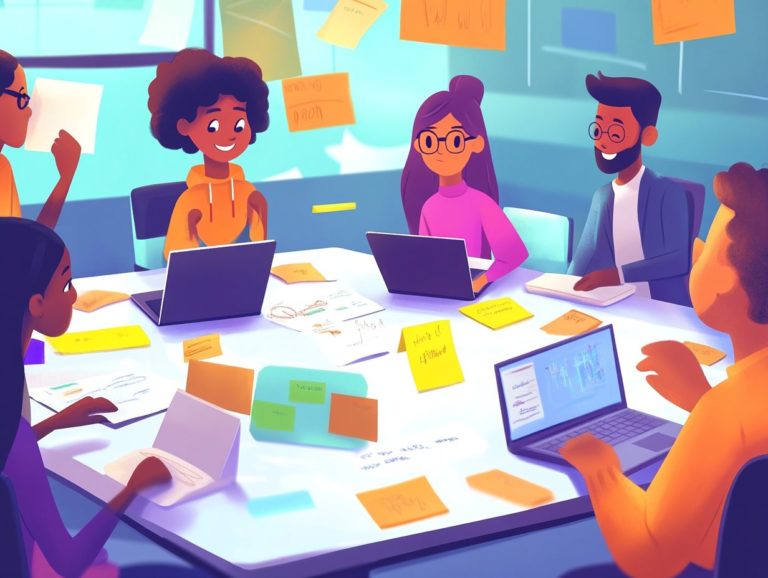E-Learning Solutions: Meeting Diverse Learning Needs
E-learning has transformed the educational landscape, moving from traditional classrooms to vibrant online environments. This transformation has opened up opportunities for various learning styles and needs, making education more accessible than ever.
While the benefits of flexibility and personalized experiences are clear, challenges like technological barriers and student engagement remain. Explore the journey of e-learning, discover effective strategies to enhance learning experiences, and consider what the future may hold with innovative technologies on the horizon.
Experience how e-learning can empower learners everywhere!
Contents
- Key Takeaways:
- The Evolution of E-Learning
- Diverse Learning Needs in the Digital Age
- Benefits of E-Learning Solutions
- Challenges in Meeting Diverse Learning Needs
- Effective Strategies for E-Learning
- Future of E-Learning
- Your Questions Answered: E-Learning Solutions
- What are E-Learning Solutions?
- How do E-Learning Solutions meet diverse learning needs?
- What types of diverse learning needs can be met by E-Learning Solutions?
- Are there any benefits to using E-Learning Solutions for meeting diverse learning needs?
- How can organizations use E-Learning Solutions to meet the diverse learning needs of their employees?
- What are some examples of E-Learning Solutions that can meet diverse learning needs?
Key Takeaways:
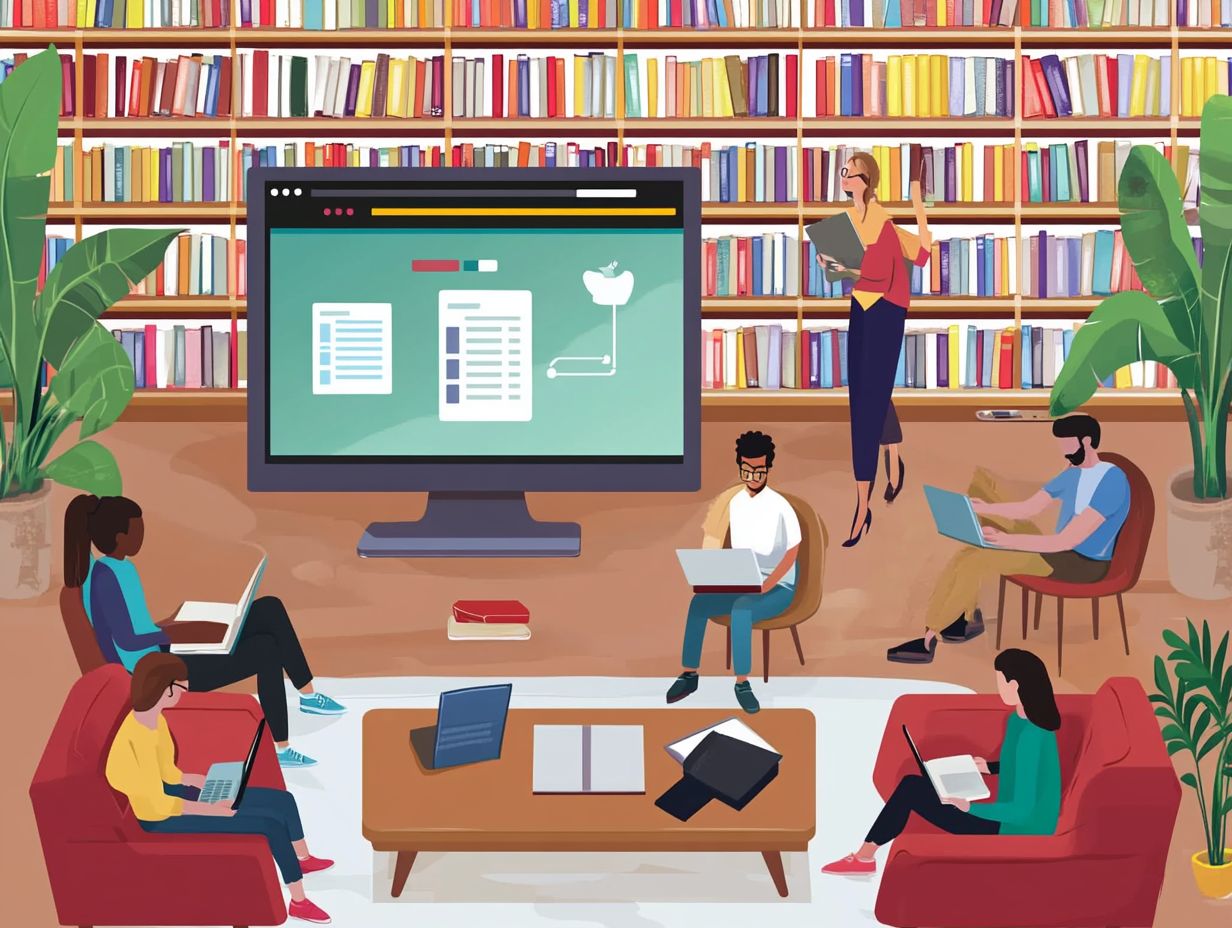
- Embrace the evolution of e-learning, which provides flexibility and accessibility for diverse learning needs.
- Understand various learning styles to create personalized learning experiences through adaptive methods and multimedia.
- Address technological barriers and keep student engagement high with innovative technologies and approaches.
The Evolution of E-Learning
The evolution of e-learning has reshaped education significantly, shifting from traditional classrooms to digital platforms that focus on efficiency and learner engagement.
With advancements in instructional design and technology integration, e-learning solutions now offer a variety of online courses tailored to diverse learner profiles, maximizing learning outcomes.
This change highlights the importance of adaptive methods, where feedback plays a crucial role in improving instructional methods and meeting each learner’s unique preferences.
From Traditional Classrooms to Online Learning
The transition from traditional classrooms to online learning marks a remarkable journey. Integration of multimedia elements and engagement strategies enhances interactions for learners.
In this new educational landscape, your understanding of instructional methods has evolved. While traditional formats relied on lectures and textbooks, online environments utilize videos, interactive quizzes, and virtual discussions for dynamic interactions.
This shift accommodates your diverse learning styles and opens doors to real-time feedback and collaboration. Multimedia content such as animations, podcasts, and simulations makes complex concepts more accessible and engaging.
These advancements reflect a trend in teaching practices, emphasizing the need for adaptable and engaging learning experiences in today s digital age.
Diverse Learning Needs in the Digital Age
Today, understanding diverse learning needs is crucial for success. Educational institutions work to create inclusive environments that meet various accessibility requirements and learner profiles.
By employing personalized learning approaches, all learners regardless of background can engage with real-world scenarios that deepen understanding and enhance knowledge application.
This commitment to equity in learning ensures every learner has the opportunity to participate and thrive.
Join the e-learning revolution and unlock your potential today!
Understanding Different Learning Styles
Understanding different learning styles is essential for optimizing your educational experiences. It gives you the power to tailor instructional methods and ways to measure learning to meet the unique needs of diverse learners.
By recognizing that you may prefer visual, auditory, or kinesthetic approaches, you can cultivate a more inclusive environment that enhances engagement and retention. Incorporating multimedia resources captivates visual learners! Lively group discussions resonate with those who thrive on auditory input.
The importance of personalized feedback cannot be overstated; it offers you valuable insights into your progress and nurtures a growth mindset.
Such feedback creates opportunities for self-reflection, allowing you to hone your skills at your own pace. Grasping these dynamics ultimately leads to more effective instructional design and enriched educational outcomes tailored to your journey.
Benefits of E-Learning Solutions
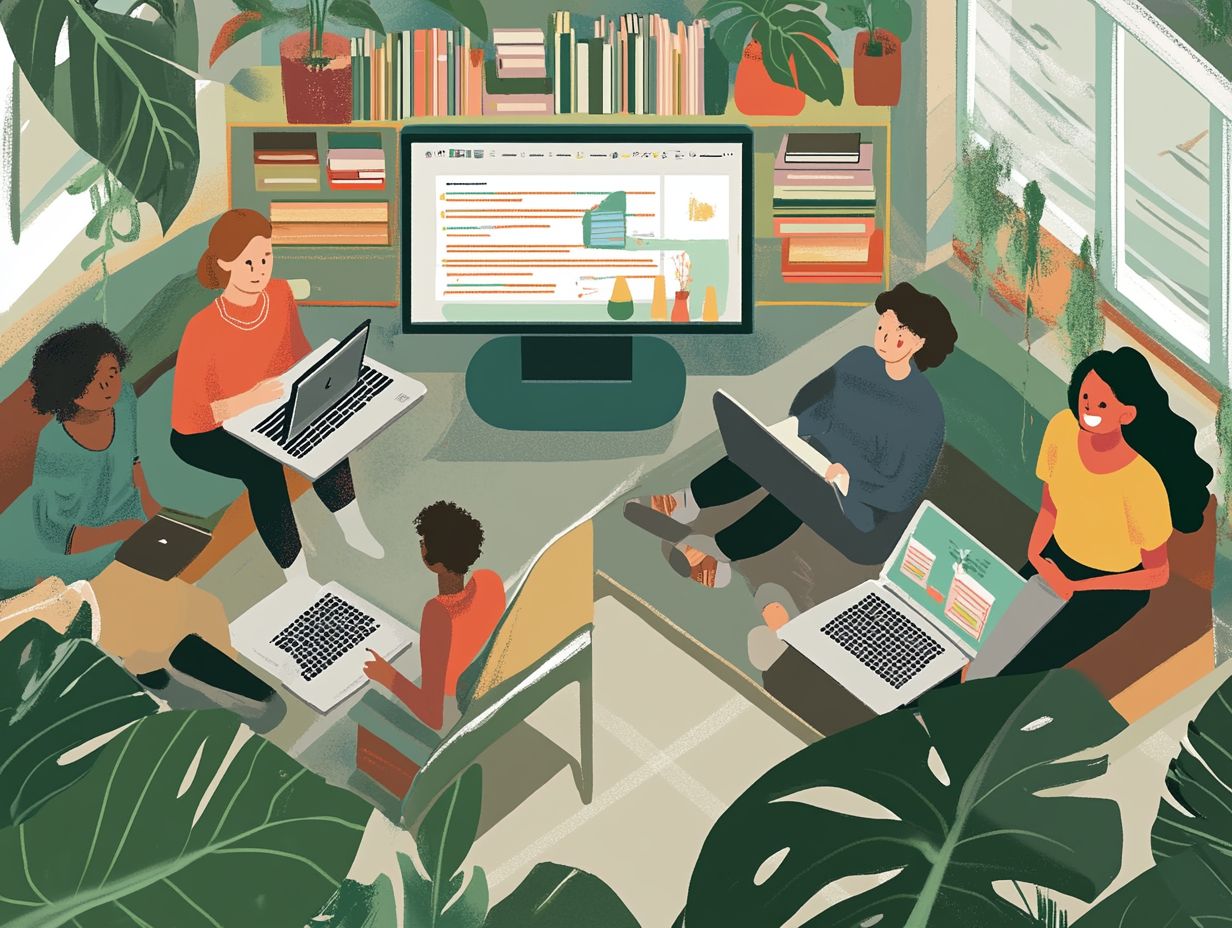
The benefits of e-learning solutions are truly remarkable! They provide you with unparalleled flexibility and accessibility in training. These solutions cater to your unique learning needs and significantly enhance employee engagement through personalized content designed specifically for you.
Flexibility and Accessibility
Flexibility and accessibility are the defining features of e-learning, allowing you to engage with online courses whenever it suits you, all while enjoying the technology that enhances your learning experience.
With the ability to study at any time and from anywhere, e-learning platforms cater to your diverse schedule. This makes education readily accessible for busy professionals, students, and lifelong learners like yourself. This adaptability creates a more personalized learning journey, enabling you to focus on subjects that truly resonate with your interests and career aspirations.
Many platforms offer accessibility features such as screen readers, subtitles, and adaptive interfaces, ensuring that all learners, including those with disabilities, can fully engage with the content. This inclusive approach not only enriches the educational landscape but also significantly boosts your engagement, fostering a collaborative environment where knowledge flows freely. Don’t miss out on these incredible opportunities!
Personalized Learning Experience
A personalized learning experience is essential in e-learning. By employing methods that change based on how you learn, you can cater to your unique preferences and incorporate robust feedback mechanisms that drive continuous improvement.
This approach allows you to engage with the material at your own pace and helps pinpoint specific strengths and weaknesses, facilitating a more targeted learning journey. By leveraging technology like artificial intelligence and analyzing data to understand learning patterns, educators can create tailored content that resonates with various learning styles.
Timely and constructive feedback is crucial in this process, enabling you to assess your progress and make necessary adjustments. As a result, your overall educational experience becomes more relevant and effective, ultimately enhancing your outcomes and fostering a deeper understanding of the subject matter.
Challenges in Meeting Diverse Learning Needs
Despite the remarkable advancements in e-learning, you may still encounter various challenges when it comes to addressing the diverse learning needs of individuals. Technological barriers can often impede engagement and diminish learner motivation, making it crucial to choose the right e-learning solution to navigate these obstacles effectively.
Technological Barriers
Technological barriers can profoundly influence your e-learning experience, impacting accessibility and complicating the creation of user-friendly content tailored to your needs.
You may encounter challenges such as inadequate internet connectivity, outdated devices, or a lack of familiarity with digital tools, which can lead to frustration and disengagement. Without inclusive course materials, you may struggle to participate fully.
To tackle these issues, educators can adopt several effective strategies:
- Provide alternative formats for content
- Use adaptive technologies
- Ensure that platforms are compatible with various devices
By emphasizing user experience and accessibility features, institutions can foster a more equitable learning environment that gives every student the power to thrive.
Engagement and Motivation
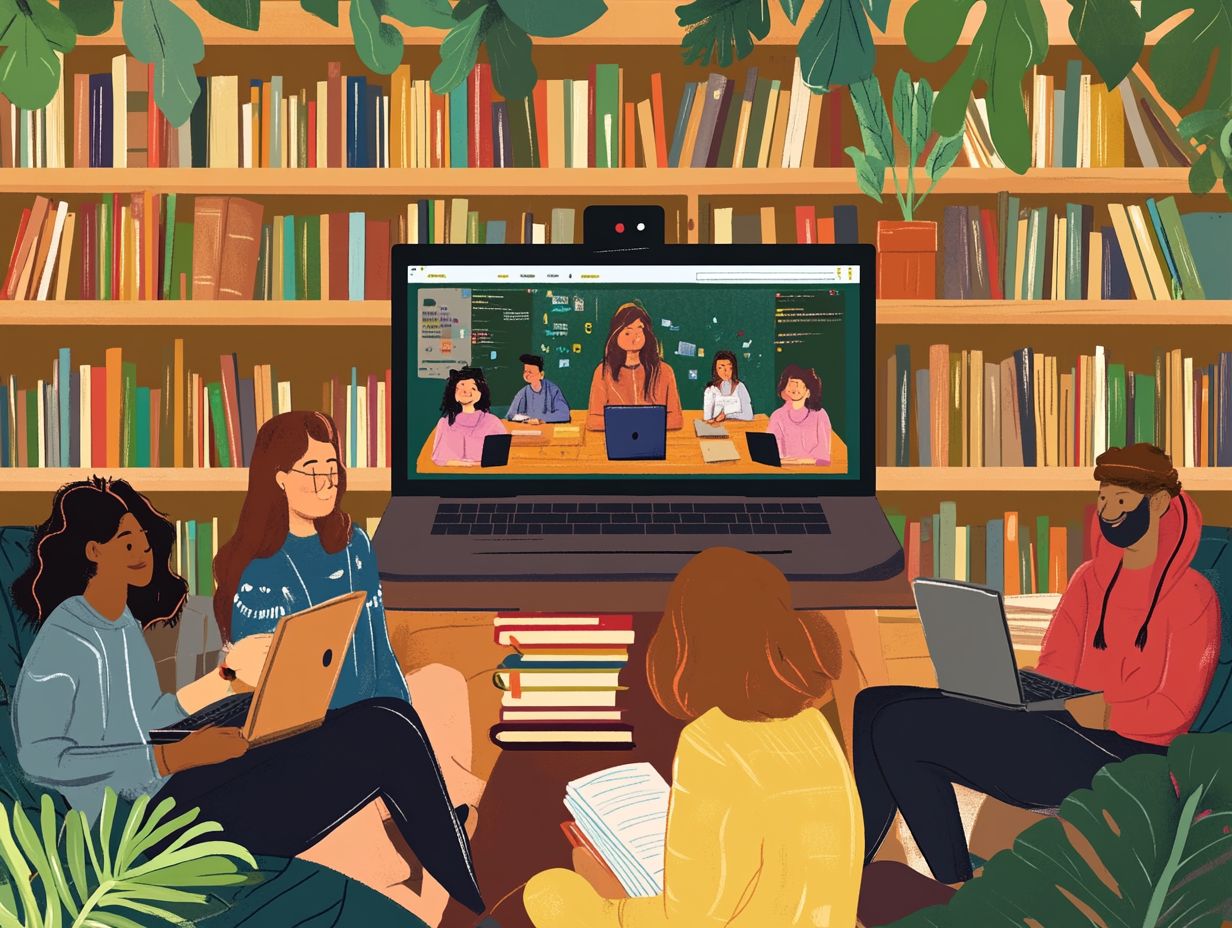
Engagement and motivation are essential elements of successful e-learning, as they directly impact your interactions and the overall effectiveness of instructional design.
Understanding what drives you and your peers to engage actively can lead to the creation of a vibrant online learning environment. Several factors contribute to this, including the relevance of the course content, the interactivity of the learning materials, and the sense of community fostered among participants. Recognizing a connection between your goals and the curriculum boosts your motivation.
Techniques such as gamification (using game-like elements in learning), personalized feedback, and collaborative projects can significantly elevate your engagement levels.
By thoughtfully addressing these elements, educators can cultivate a more dynamic and enriching educational experience for everyone involved.
Effective Strategies for E-Learning
Implementing effective strategies for e-learning is crucial if you want to optimize learner engagement and enhance educational outcomes.
Focus on applying adaptive learning techniques and integrating multimedia and interactive content to truly elevate the learning experience.
Adaptive Learning Techniques
Adaptive learning techniques are essential for personalized learning, as they leverage learner profiles to tailor content and assessment methods that align with your unique needs and preferences.
This level of customization allows educators to cater to various learning styles and paces, resulting in enhanced engagement and improved retention of knowledge. By analyzing data on your interactions and performance, these techniques enable real-time adjustments to instructional materials, ensuring you receive the right level of challenge.
This dynamic approach not only boosts your motivation by letting you progress at your own pace but also deepens your understanding of the subject matter. As a result, adaptive learning gives both instructors and learners the power to craft a more meaningful educational experience, perfectly aligning with the goals of contemporary e-learning environments.
Incorporating Multimedia and Interactivity
Incorporating multimedia and interactive content into your e-learning courses is vital for effective instructional design. It significantly enhances learner engagement and improves overall learning outcomes.
By using a variety of formats videos, podcasts, infographics, and simulations you can cater to diverse learning styles, fostering a more inclusive environment. Adding interactive elements like quizzes, discussion forums, and gamified activities encourages active participation, allowing learners to dive deep into the subject matter.
These strategies not only elevate motivation but also deepen understanding; after all, learners are more likely to retain information when engaged through multiple sensory channels.
Ultimately, the thoughtful application of multimedia and interactivity can truly transform the learning experience, leading to greater satisfaction and improved performance.
Future of E-Learning
Exciting changes are coming to the future of e-learning, fueled by cutting-edge technologies like virtual reality and augmented reality. These innovations promise to elevate learner engagement and craft immersive educational experiences that redefine how you acquire knowledge.
Explore these strategies now to enhance your own e-learning journey!
Innovative Technologies and Approaches
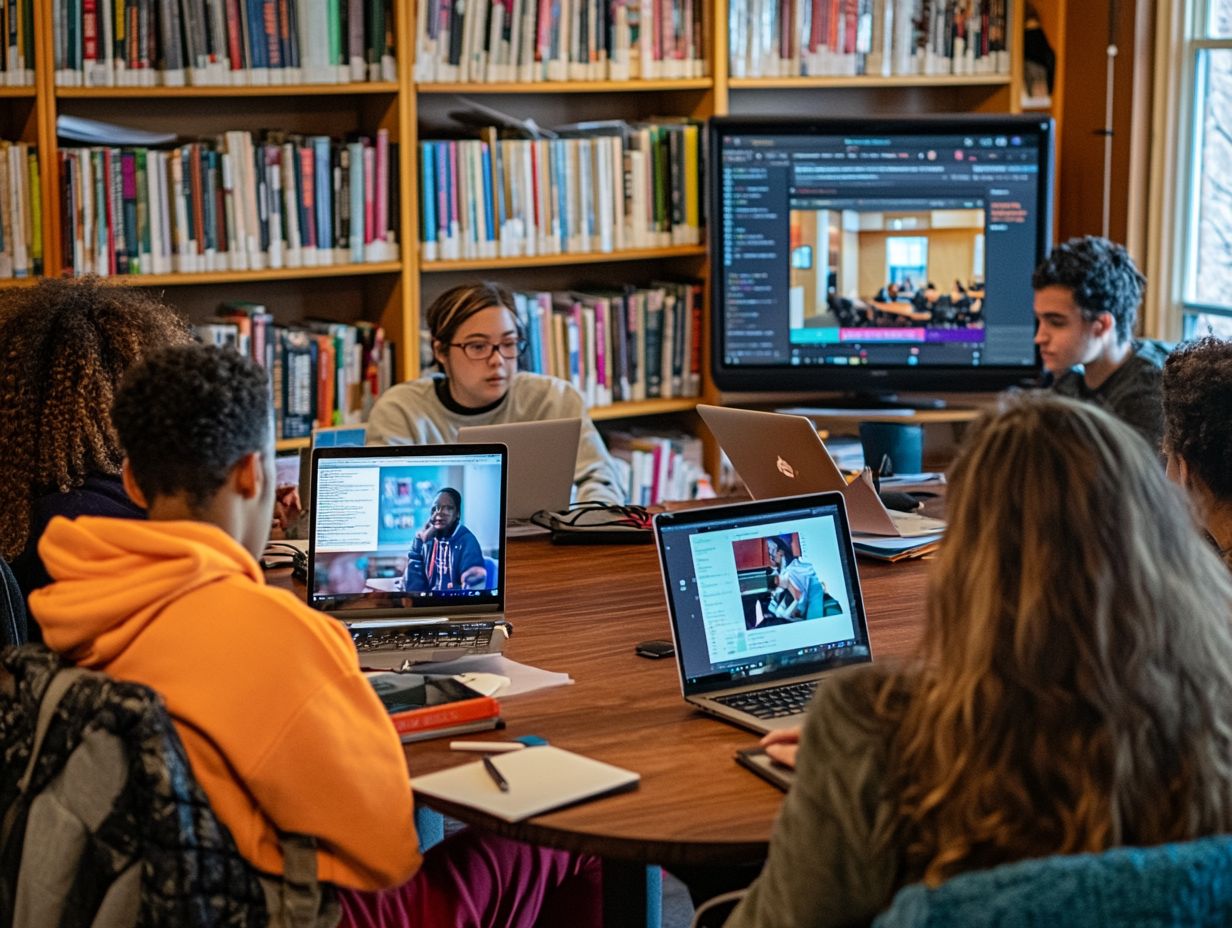
Innovative technologies like virtual reality and augmented reality are transforming e-learning. They bring interactive and immersive experiences that elevate both instructional design and learner engagement.
These new tools allow you to step into environments and scenarios that were once confined to traditional classrooms. Imagine being transported to historical landmarks or scientific laboratories through virtual reality. This type of learning by doing not only enhances comprehension but also boosts retention rates.
With augmented reality, digital information can seamlessly overlay your physical surroundings. This enriches your learning materials with added context and interactivity. The integration of artificial intelligence takes this a step further, personalizing your educational journey by adapting content to align with your unique learning style and pace.
These technologies also cultivate collaboration among learners. They equip you with the skills you need to succeed now and in the future, ensuring you thrive in an ever-evolving job market.
Your Questions Answered: E-Learning Solutions
What are E-Learning Solutions?
E-Learning Solutions are online platforms or tools that provide learning materials and resources for individuals to acquire knowledge and skills through electronic devices.
How do E-Learning Solutions meet diverse learning needs?
E-Learning Solutions use a variety of teaching methods, multimedia resources, and interactive features, aligning with the path to lifelong learning and catering to different learning styles and preferences of individuals.
What types of diverse learning needs can be met by E-Learning Solutions?
- Visual preferences
- Auditory preferences
- Kinesthetic preferences
- Reading/writing preferences
- Different paces of learning
- Accessibility needs
Are there any benefits to using E-Learning Solutions for meeting diverse learning needs?
Yes, E-Learning Solutions offer flexibility, convenience, personalized learning, and the ability to learn at one’s own pace. Additionally, they can play a crucial role in understanding the needs of diverse learners, making it easier for individuals to meet their specific learning needs.
How can organizations use E-Learning Solutions to meet the diverse learning needs of their employees?
Organizations can customize E-Learning solutions to align with their employees’ learning needs. They can provide a variety of training materials and offer a platform for continuous learning and development.
What are some examples of E-Learning Solutions that can meet diverse learning needs?
Some examples of E-Learning Solutions are:
- Online courses
- Learning management systems
- Educational apps
- Virtual classrooms
- Gamified learning platforms
All of these can be tailored to meet diverse learning needs.


